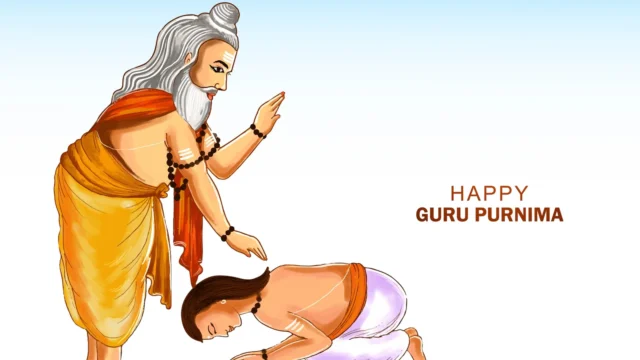Guru Purnima is one of the most sacred festivals in Indian culture—a day dedicated to expressing gratitude to our teachers, mentors, and spiritual guides. This festival is celebrated on the full moon day in the Hindu month of Ashadha (June–July) and transcends religious and traditional boundaries, celebrating the timeless relationship between teacher and student.
Let us explore the meaning, significance, origin, customs, and the role this occasion plays in our lives.
Meaning of Guru Purnima
In Sanskrit, the term “Guru” means “one who dispels darkness” (Gu – darkness, Ru – remover). A Guru is more than just a teacher; they are a guide who leads us from ignorance to knowledge, confusion to clarity, and darkness to light. “Purnima” refers to the full moon day, symbolizing completeness and enlightenment. Therefore, this day is dedicated to honoring our Gurus for illuminating our lives.
Guru Purnima has its origins in ancient India. Hindu tradition marks this day as the birth anniversary of Maharshi Vyasa, who authored the Vedas and the Mahabharata and made significant contributions to Indian scriptures. The day is also known as Vyasa Purnima in his honor.
According to Buddhist tradition, Lord Buddha delivered his initial teachings to his disciples at Sarnath after his enlightenment on this particular day. Additionally, Jainism celebrates this day by honoring Lord Mahavira, who was the first guru to his disciple, Gautama Swami.
Significance of Guru Purnima
Spiritual Significance: Guru Purnima is a day for self-reflection and worship. Disciples show respect to their spiritual mentors by expressing gratitude for the invaluable wisdom and guidance they have received.
Academic and Personal Growth: Students from all backgrounds pay respect to their academic teachers on this special day, reinforcing the path of lifelong learning through expressions of gratitude.
Cultural and Social Significance: The festival emphasizes the fundamental role of the Guru-Shishya (teacher-student) relationship, which is a cornerstone of Indian cultural traditions.
The Story of Maharshi Vyasa
Maharshi Vyasa, born to Sage Parashara and Satyavati, is celebrated as one of India’s greatest sages. He is recognized for compiling the Vedas, writing the epic Mahabharata, and creating the Puranas.
Through his work, he established an unparalleled system for organizing and preserving the vast Hindu scriptural knowledge. Guru Purnima is also referred to as Vyasa Purnima to honor both the spirit of mentorship and the great sage himself.
Benefits of Celebrating Guru Purnima
– Rekindles the teacher-student bond
– Brings spiritual clarity and growth
– Encourages introspection and gratitude
– Inspires lifelong learning and humility
– Promotes community harmony through shared celebrations
Conclusion
Guru Purnima is more than just a festival; it is a celebration of the wisdom that guides our lives. By honoring our Gurus, we are also honoring the journey of life and learning. Whether you choose to celebrate with rituals, prayers, or simple acts of gratitude, let this day remind us of the invaluable role our mentors play in shaping our destinies. mentors play in shaping our destinies.







